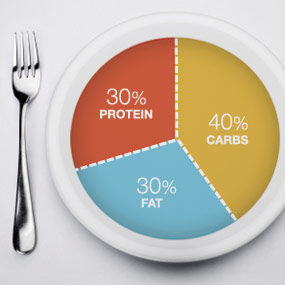 Ever wonder which fats are “healthy fats”, what the different types of fats are and how much you’re allowed to eat? Check out this article by HelpGuide.org and get the skinny on healthy fats, good fats, bad fats, and the power of Omega 3′s.
Ever wonder which fats are “healthy fats”, what the different types of fats are and how much you’re allowed to eat? Check out this article by HelpGuide.org and get the skinny on healthy fats, good fats, bad fats, and the power of Omega 3′s.
Healthy fats play a huge role in helping to manage your moods, stay on top of your mental game, fight fatigue, and even control your weight. The answer isn’t cutting out the fat—it’s learning to make healthy choices and to replace bad fats with good ones that promote health and well-being.
 Monounsaturated fats and polyunsaturated fats are known as the “good fats” because they are good for your heart, your cholesterol, and your overall health.
Monounsaturated fats and polyunsaturated fats are known as the “good fats” because they are good for your heart, your cholesterol, and your overall health.
- Olive Oil, Avocados, Olives are examples of Monounsaturated fats.
- Corn Oil, Fatty Fish, Soy Milk, & Tofu are examples of Polyunsaturated fats.
 Saturated fats and trans fats are known as the “bad fats” because they increase your risk of disease and elevate cholesterol. Appearance-wise, saturated fats and trans fats tend to be solid at room temperature (think of butter or traditional stick margarine), while monounsaturated and polyunsaturated fats tend to be liquid (think of olive or corn oil).
Saturated fats and trans fats are known as the “bad fats” because they increase your risk of disease and elevate cholesterol. Appearance-wise, saturated fats and trans fats tend to be solid at room temperature (think of butter or traditional stick margarine), while monounsaturated and polyunsaturated fats tend to be liquid (think of olive or corn oil).
- Butter, Cheese, Ice Cream, and fatty cuts of meat are examples of Saturated fats.
- Stick margarine, Vegetable shortening, Fried Foods, Candy Bars, and Commercially-baked pastries, doughnuts, and cakes are examples of Trans fats.
 So how much fat can I eat? The USDA recommends that the average individual:
So how much fat can I eat? The USDA recommends that the average individual:
- Keep total fat intake to 20-35% of calories
- Limit saturated fats to less than 10% of your calories (200 calories for a 2000 calorie diet)
- Limit trans fats to 1% of calories (2 grams per day for a 2000 calorie diet)
Try these healthier options to reduce saturated fats:
- Instead of Butter - use Olive Oil
- Instead of Cheese - use Low-fat or reduced-fat cheese
- Instead of Red Meat - use White meat chicken or turkey
- Instead of Ice Cream - use Frozen yogurt
- Instead of Sour Cream - use Plain, non-fat yogurt
Omega-3 fatty acids are a type of polyunsaturated fat. While all types of monounsaturated and polyunsaturated fats are good for you, omega-3 fats are proving to be especially beneficial.
We’re still learning about the many benefits of omega-3 fatty acids, but research has shown that they can:
- Prevent and reduce the symptoms of depression
- Protect against memory loss and dementia
- Reduce the risk of heart disease, stroke, and cancer
- Ease arthritis, joint pain, and inflammatory skin conditions
- Support a healthy pregnancy
Good Sources of Omega-3′s are fatty fish such as salmon, herring, mackerel, anchovies, sardines, or high-quality cold-water fish oil supplements.
How much Omega-3 do you need?
The American Heart Association recommends consuming 1–3 grams per day of EPA and DHA (1 gram = 1,000 milligrams). For the treatment of mental health issues, including depression and ADHD, look for supplements that are high in EPA, which has been shown to elevate and stabilize mood. Aim for at least 1,000 milligrams of omega-3 fatty acids per day.

















